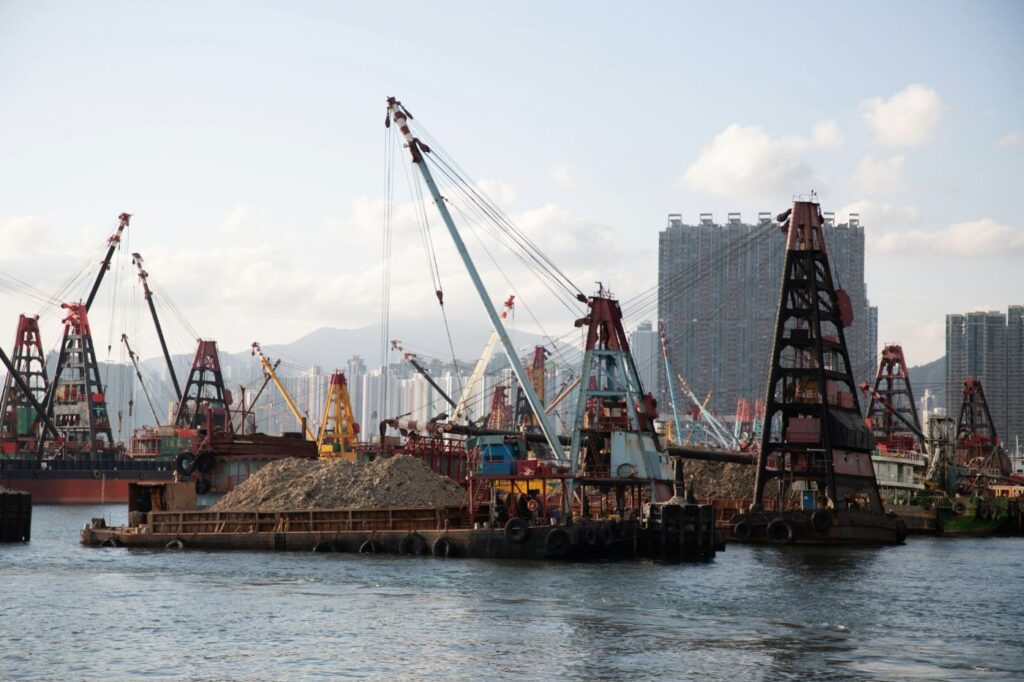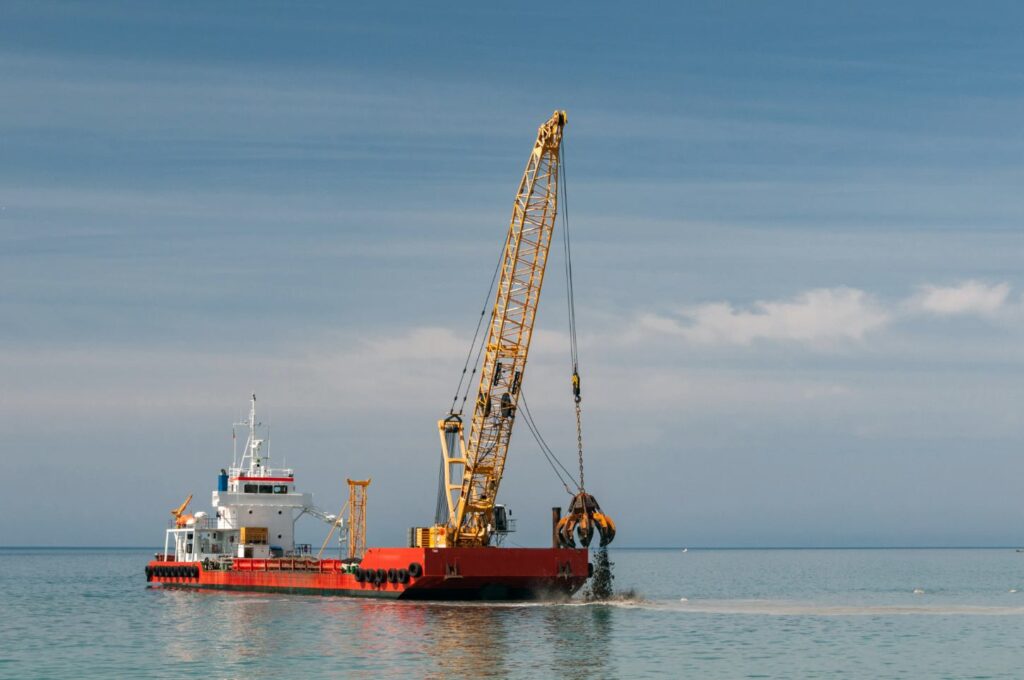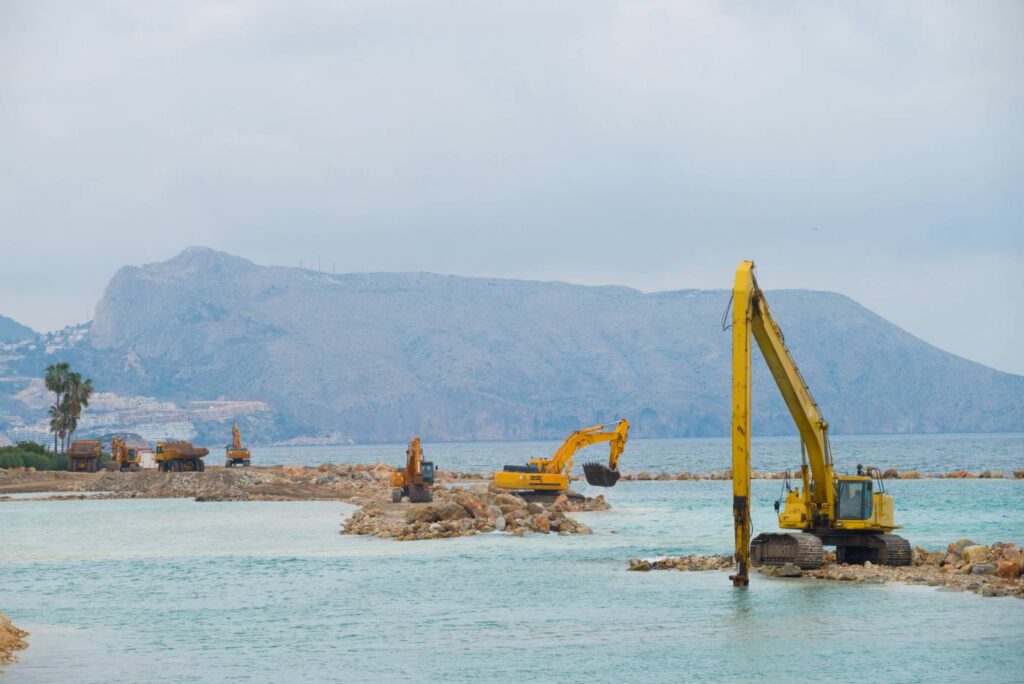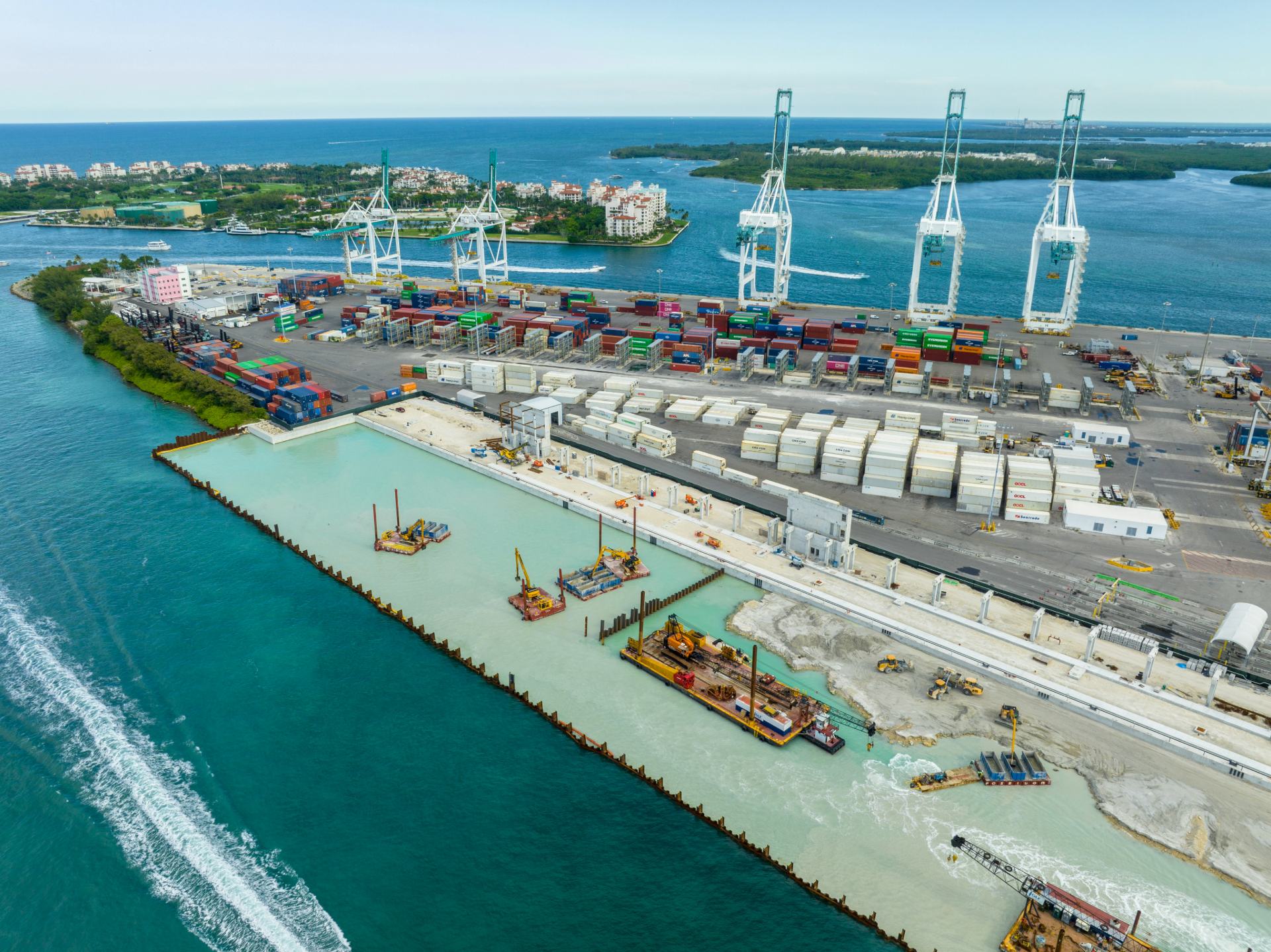In industries where sediment buildup, restricted water flow, and environmental compliance are critical concerns, choosing the right dredging partner is more than just a logistical decision—it’s a strategic one. From mining and manufacturing to wastewater treatment and energy production, many sectors depend on reliable industrial dredging services to maintain infrastructure, improve operational efficiency, and prevent costly downtime.
The growing complexity of industrial sites demands more than basic dredge services. Today’s service providers must offer a combination of technical expertise, advanced equipment, and environmental responsibility to deliver results that align with strict project requirements and regulatory frameworks. Whether you’re managing a large reservoir, industrial lagoon, or tailings pond, a well-executed dredging plan is essential for long-term success.
Additionally, projects like sludge removal and pond dredging services require tailored approaches that balance efficiency with environmental protection. The right provider will not only restore capacity and flow but also ensure that materials are handled and disposed of properly.
This blog explores the key factors to consider when selecting a provider of industrial dredging services. With the right partner, businesses can confidently tackle even the most demanding sediment management challenges and keep their operations running at full capacity.
Understanding the Scope of Industrial Dredging Services
Industrial dredging services encompass a wide range of operations that go far beyond routine sediment removal. These specialized services are tailored to meet the needs of large-scale, complex sites such as industrial ponds, reservoirs, power plant cooling basins, wastewater treatment facilities, mining operations, and shipping terminals. The primary goal is to manage and remove accumulated materials, such as sludge, sand, gravel, silt, and industrial by-products, that hinder operational efficiency, compliance, and safety.
Unlike general dredge services, industrial dredging services are designed to handle challenging conditions that may involve hazardous materials, abrasive sediments, or deep and confined areas. These operations often require advanced equipment like cutter suction dredgers, submersible dredge pumps, amphibious excavators, and real-time monitoring systems to ensure precision, efficiency, and environmental safety.
In many cases, companies also need support with regulatory compliance, sediment testing, waste handling, and restoration, making it essential to choose a provider that can deliver comprehensive dredge services from planning through execution. For instance, pond dredging services might be required to restore capacity in a heavily silted containment area. Still, only an experienced provider with the right tools and safety protocols can ensure minimal disruption to surrounding ecosystems and operations.
Industrial dredging services also support long-term infrastructure health. By removing excess buildup, these services reduce the risk of flooding, equipment damage, and regulatory violations. They are essential in maintaining water flow, structural integrity, and overall facility performance. Whether it’s clearing intake channels, managing mining tailings, or cleaning lined lagoons, the scope of industrial dredging services is broad and highly specialized.
Ultimately, the complexity of each industrial site demands a provider that understands the full range of dredge services required and has the proven capability to deliver results across diverse environments and project scales.
Core Capabilities to Look for in a Dredging Company

When evaluating potential providers of dredging solutions, it’s essential to assess their core capabilities to ensure they can meet the specific demands of your project. A reliable provider of industrial dredging services should offer a combination of technical expertise, modern equipment, and a proven track record across multiple industries. Look for companies that have successfully handled large-scale sediment removal, dewatering, and sludge management in environments similar to yours.
One of the first things to consider is the variety and quality of equipment the company uses. From submersible slurry pumps to long-reach excavators and remote-operated dredges, their fleet should be capable of handling high volumes and abrasive materials common in industrial applications. Additionally, their team should be well-versed in navigating environmental regulations and safety protocols that govern dredging solutions in industrial zones.
Flexibility is also a key capability. Whether you need a one-time cleanup or long-term maintenance, the provider should be able to scale operations accordingly. This is especially important for more specific jobs such as pond dredging services, where precision and environmental care are crucial.
Ultimately, a provider with the right core capabilities will not only deliver efficient industrial dredging services but also minimize risk, reduce downtime, and maximize long-term project success.
Evaluating Technical Expertise and Compliance
When selecting a provider for dredge services, technical expertise and regulatory compliance are non-negotiable. Industrial dredging services often involve complex site conditions, hazardous materials, and strict environmental regulations. Therefore, the company you choose should demonstrate a strong understanding of both operational execution and legal obligations.
A qualified provider of industrial dredging services will have a team of experienced engineers and field technicians who are knowledgeable in sediment removal, dewatering, and site restoration. They should be able to assess the site, identify potential challenges, and design a tailored dredging strategy that maximizes efficiency while minimizing disruption. Their technical knowledge should extend to equipment operation, sediment testing, flow control, and slurry handling.
Equally important is their ability to comply with environmental standards and safety requirements. This includes holding the necessary licenses, permits, and certifications and adhering to regulations set by environmental authorities. Whether the project involves large-scale industrial basins or smaller pond dredging services, the provider must follow best practices for material containment, disposal, and habitat protection.
Evaluating these aspects ensures the company you partner with for dredge services can complete the work legally, safely, and to a high technical standard, reducing project risk and supporting sustainable, long-term results.
Assessing Equipment and Technology Infrastructure

The effectiveness of any dredging project depends significantly on the quality, versatility, and reliability of the equipment and technology used. When considering a company for industrial dredging services, it’s important to assess the types of dredging equipment they operate and the technologies they employ to ensure precise, efficient, and safe operations.
Modern industrial dredging services rely on a variety of equipment, including cutter suction dredges, submersible slurry pumps, amphibious excavators, and remote-operated dredge systems. Each type is suited to specific applications, and a competent service provider should offer a diverse fleet to match the unique demands of different environments. For example, cutter suction dredges are ideal for compacted sediments, while remote-operated dredges can work safely in confined or hazardous conditions.
Beyond equipment, technology infrastructure plays a major role in boosting productivity and accuracy. Leading providers of dredging solutions utilize GPS-based positioning systems, sonar imaging, real-time monitoring tools, and automated control systems to enhance precision and reduce human error. These technologies allow for better tracking of dredging progress, improved quality control, and optimized material removal with minimal waste or environmental impact.
It’s also worth evaluating the condition and age of the company’s machinery. Outdated or poorly maintained equipment can lead to delays, inefficiencies, and unexpected costs. Providers that invest in regular maintenance and fleet upgrades demonstrate a commitment to operational excellence and client satisfaction.
In smaller-scale projects like pond dredging services, the ability to deploy compact yet powerful equipment with minimal disruption to surrounding areas is crucial. A strong technology infrastructure ensures that even precision jobs are executed smoothly and in line with environmental best practices.
Ultimately, a provider’s investment in advanced equipment and technology reflects their capability to deliver high-quality industrial dredging services. This not only results in more efficient operations but also contributes to better compliance, reduced downtime, and long-term project success across diverse dredging applications.
Reputation and Client References
Reputation plays a pivotal role when choosing a provider for industrial dredging services. A company’s track record speaks volumes about its reliability, performance, and professionalism. Before entering into any agreement, it’s essential to research the provider’s history, including project types, client industries, and overall satisfaction rates. Look for a dredging partner that has consistently delivered successful outcomes across complex industrial sites, not just routine or small-scale jobs.
Client references are invaluable during this evaluation. Ask for case studies or testimonials, especially from businesses with similar project scopes or industries. Positive feedback from clients who have used their pond dredging services or large-scale industrial dredging services is a strong indicator of the company’s capability and customer service standards.
Also consider the provider’s presence in industry associations, certifications, and any recognition they’ve received. Awards or long-standing contracts with municipalities and industrial plants suggest credibility and consistent results.
For projects involving environmental sensitivity or specialized requirements like pond dredging services, choosing a company with verified success and client satisfaction minimizes risks and ensures smooth execution. By prioritizing reputation and proven experience in both pond-level and industrial dredging services, you gain a trustworthy partner capable of handling your unique site challenges.
Cost Considerations and Value for Investment
Cost is a crucial factor when selecting a provider for dredge services, but it’s important to look beyond the initial price tag and evaluate overall value. Industrial dredging services vary significantly in complexity, and a low-cost option may lack the expertise, equipment, or support needed for long-term success. Instead of focusing solely on budget, assess what is included in the provider’s proposal, such as project planning, mobilization, sediment disposal, compliance documentation, and post-dredging site restoration.
An experienced provider offering high-quality industrial dredging services may charge more upfront, but will likely deliver better efficiency, fewer delays, and reduced risk of equipment failure or environmental non-compliance. This can result in lower total project costs and fewer operational disruptions.
It’s also helpful to request detailed breakdowns for labor, equipment use, permitting, and contingency costs. Transparent pricing helps you compare offers fairly and avoid unexpected expenses later. For specialized jobs like pond dredging services, ensure the proposal accounts for environmental precautions and tailored techniques that protect the surrounding ecosystem.
Beyond the initial scope, consider whether the provider offers value-added services such as hydrographic surveys, sediment testing, or customized reporting. These extras can greatly enhance project oversight and compliance with environmental regulations. Working with a team that has proven experience in similar projects can prevent costly missteps and ensure your dredging operation meets its objectives on time and within budget.
Also, evaluate the long-term benefits of partnering with a company that offers consistent post-project support, such as maintenance dredging, equipment leasing, or operational consultations. These services can help extend the usable life of the dredged site, reduce future capital expenditures, and ensure smoother operations over time.
Ultimately, the best value comes from dredge services that align with your technical needs, regulatory responsibilities, and long-term maintenance goals. Choosing wisely ensures both short-term performance and lasting operational benefits for your site.
Post-Dredge Services and Support

Post-Dredge services and ongoing support are essential components of a successful project, yet they are often overlooked during the selection process. A quality provider of industrial dredging services should offer more than just sediment removal—they should deliver a comprehensive plan that includes post-project cleanup, sediment management, environmental reporting, and site restoration.
Effective dredging solutions involve more than moving material. After the dredging phase, proper handling of collected sediments—whether through dewatering, transport, or disposal—is critical for compliance and environmental protection. Look for providers who manage these logistics efficiently and in line with local regulations.
Additionally, long-term support is especially valuable for industrial sites that require routine maintenance or multi-phase dredging. Reliable providers of industrial dredging services often offer inspection reports, performance reviews, and scheduling for future maintenance, helping you stay ahead of sediment buildup and system inefficiencies.
For smaller-scale applications like pond dredging services, post-dredging support ensures that the site remains balanced and environmentally sound. This includes vegetation management, erosion control, and water quality monitoring.
By choosing a provider that prioritizes post-dredge services, you ensure the long-term effectiveness of your project and minimize the likelihood of recurring problems, ultimately maximizing the return on investment from your dredge services.
Conclusion
Selecting the right provider for dredging solutions is a critical decision that can significantly impact the success and efficiency of your project. Whether you’re dealing with large-scale industrial lagoons, municipal basins, or smaller retention areas, the expertise, equipment, and support offered by your service partner play a vital role in achieving long-term results. From initial planning to post-dredging support, every phase requires precision, compliance, and technical know-how.
Reliable providers of industrial dredging services offer more than just equipment—they bring experience, regulatory knowledge, and customized solutions tailored to your specific site conditions. Their ability to manage sediment removal, environmental impact, and ongoing maintenance ensures your operations continue without disruption. Additionally, those offering specialized pond dredging services can help maintain water quality, prevent flooding, and restore storage capacity in smaller but equally important systems.
When comparing dredge services, don’t base your decision solely on price. Instead, evaluate the full scope of services, reputation, equipment quality, and long-term value. This approach ensures you select a partner who can meet both the immediate and future demands of your site.
In the end, choosing experienced professionals in industrial dredging services and pond dredging services gives you confidence that your infrastructure is in capable hands, ready to perform, adapt, and endure.



